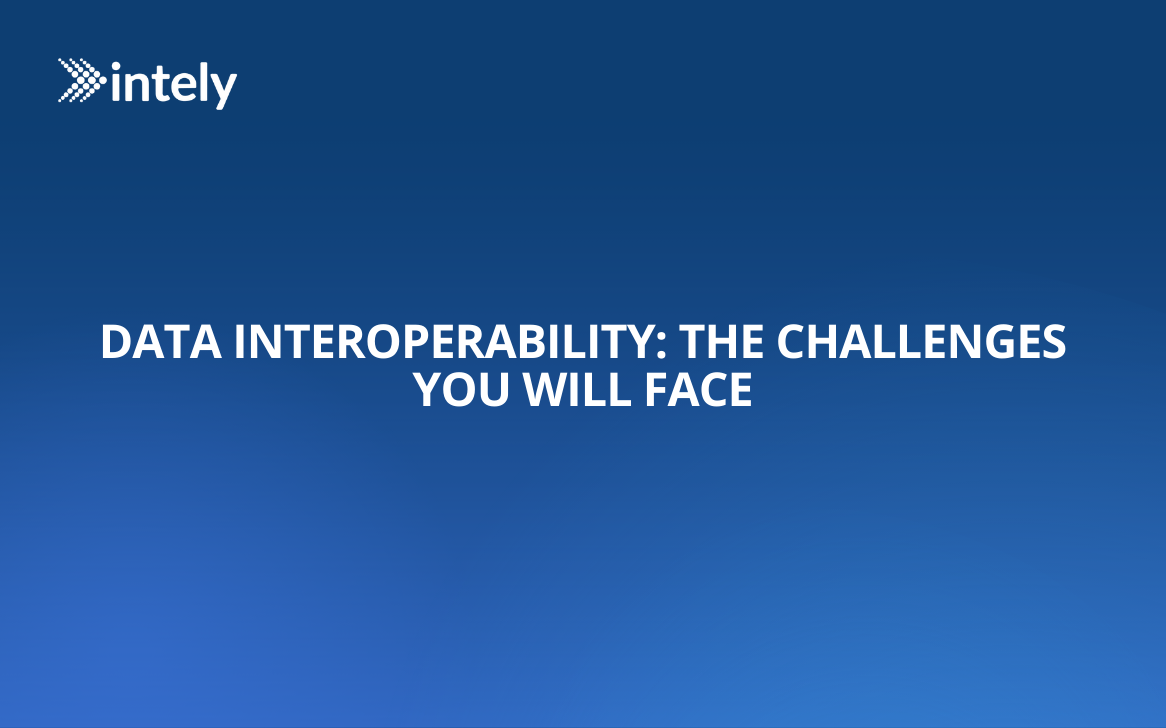What’s New with intely: May Roundup
Here are the highlights of all the content we have posted in the past month. We hope this will give you a sense of what intely is all about, and you'll feel…
In today's fast-changing healthcare world, data is extremely valuable and helps organizations and providers grow and innovate. However, effective data…
.png)

In today's fast-changing healthcare world, data is extremely valuable and helps organizations and providers grow and innovate. However, effective data interoperability has become critical with the exponential increase in data production.
In this article, we will explain why data interoperability is complicated. We'll talk about the challenges in merging and exchanging data easily. We discuss using various data types, ensuring security, adhering to data rules, and encouraging communication in teams and organizations. This article helps you use your data effectively and achieve successful interoperability by addressing challenges directly.
Before we talk about the challenges of data interoperability, it's important to know what it means. Data interoperability refers to the intricate connection between disparate systems and organizations, enabling them to exchange and utilize data effortlessly ultimately improving your business processes. This data integration helps different systems easily share important information, even with different formats or structures.
Healthcare data interoperability integrates technology with clinical and operational workflows and is vitally important in improving patient care and outcomes.
Data harmonization involves aligning and mapping various data sets to ensure interoperability. This requires mapping and aligning the data with a shared format and structure. Many organizations use various data models and formats because they constantly create a large amount of data.
Unfortunately, this poses a considerable obstacle to integrating and sharing data effectively. The answer to this problem is to set clear standards and integration guidelines for data in the organization. This will make sure that different systems can work together smoothly and be compatible with each other.
Another challenge in achieving data interoperability is the lack of data governance. Data governance refers to the policies, procedures, and controls to manage and protect data. With proper data governance, organizations may avoid issues such as data duplication, data quality issues, and data security breaches. Organizations need a data governance framework to manage and share data effectively and overcome this challenge.
Data security and privacy are significant concerns regarding data sharing and interoperability. Organizations must safeguard sensitive information when sharing it between systems due to increasing data breaches and cyber-attacks. You can achieve this through data encryption, access controls, and regular security audits. Organizations must also comply with data privacy regulations, such as the Health Insurance Portability and Accountability Act (HIPAA) and General Data Protection Regulation (GDPR).
Finally, collaboration and communication within and between organizations can help ensure data interoperability. Organizations often have different goals and priorities, which makes it challenging to align their data-sharing processes.
Organizations need to communicate well and work together to solve this problem. They should create a combined IT and clinical plan. This plan should follow shared data rules and protocols.
In conclusion, data interoperability enables organizations to gain valuable business intelligence and make informed decisions. However, it comes with its own set of challenges. By understanding and addressing these challenges, organizations can achieve successful data interoperability and reap the benefits of seamless data sharing. Remember, data interoperability is not a one-time task, but an ongoing process that requires continuous effort and collaboration.
Data
Data interoperability in healthcare refers to the ability of different information technology systems and software applications to communicate, exchange data, and use the information that has been exchanged effectively. It ensures that health information is accessible and usable across various healthcare systems, improving care coordination and patient outcomes.
The main challenges include:
Organizations can overcome data harmonization challenges by establishing clear data standards and integration guidelines. This ensures that data from various sources can be mapped and aligned to a shared format, facilitating interoperability and compatibility between different systems.
To ensure data security and privacy, organizations should implement robust security measures such as data encryption, stringent access controls, and regular security audits. Compliance with legal and regulatory requirements like HIPAA for healthcare data in the U.S., and GDPR in Europe, is also crucial.
Effective collaboration and communication are vital because they help align the goals and priorities of different teams and departments within an organization. By working together and following shared data protocols, organizations can ensure that their data interoperability efforts are more cohesive and successful.